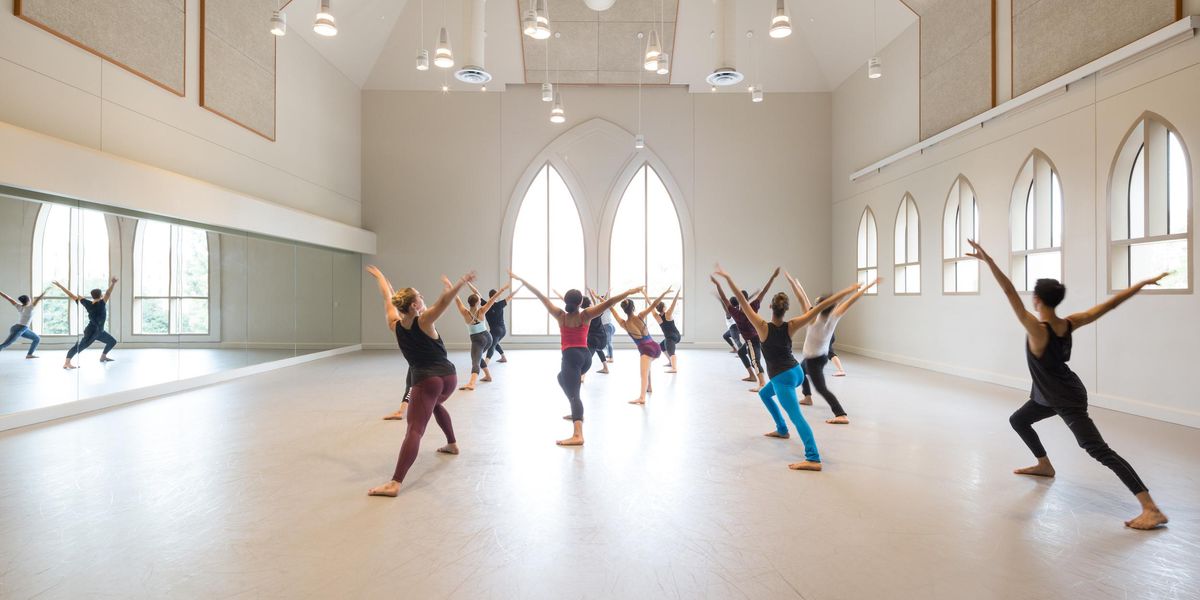The Diversity Experiment at Ballet Memphis
As much as everyone talks about diversity in ballet these days, the barrage of Misty Copeland coverage can sometimes make it seem like she’s the only person fighting to break barriers. Just today, Glamour named her one of its Women of the Year for “blazing her own path.”
Kudos to Misty, but there many other path-blazers out there, too. Earlier this week, I got to see the work of one I’ve long admired: Dorothy Gunther Pugh. For over 25 years, the Ballet Memphis director has been committed to leading a company that truly reflects and serves her city, which is over 60 percent black. She’s an idealist who’s determined to do more than pay lip service to diversity. Ballet Memphis has multiple black, Asian and Hispanic dancers, plus several administrators, teachers and board members of color. Pugh regularly commissions ballets by non-white, non-male choreographers, and invites them to dig into themes not normally seen on the ballet stage—whether that’s life in a Baltimore housing project or the relationship women have to their clothing. The company has collaborated with Rennie Harris, Chuck Davis and, recently, female jookers. Like many directors, Pugh gives her dancers opportunities to choreograph, but I met a pair at the Dance/USA conference who told me that she also encourages them to engage with the larger dance community so they can think critically about today’s big issues in ballet, like how a company can be a relevant part of its community.
Ballet Memphis and local jookers in Rafael Ferreras’ Politics. Photo by Ari Denison, courtesy Ballet Memphis.
So what’s the result of this deliberate diversification? An eclectic company bursting with energy, judging by the program at The Joyce Theater this week. The performance was less polished than what you’d see at major companies, but it was also far more idiosyncratic—in a lovely way. Alastair Macaulay wrote in The New York Times about the evening’s pieces, “All four are odd; only one proves a complete work of art—Matthew Neenan’s The Darting Eyes—and it’s every bit as odd as the others. But the mood blowing through all of these dances is generous, imaginatively breaking rules.”
Virginia Pilgrim Ramey and Jared Brunson in Neenan’s The Darting Eyes. Photo by Ari Denison, courtesy Ballet Memphis.
The company boasts some outstanding performers, particularly Virginia Pilgrim Ramey and Jared Brunson. At the same time, a couple of the dancers looked like they could benefit from another year in school. Were they pushed ahead intentionally simply to make the company more diverse? Are the less successful pieces in the repertoire a result of insisting on a range of voices, no matter how green those voices might be? Maybe, maybe not.
Some people argue that pursuing diversity for diversity’s sake risks watering down our art form, that it could lead to promoting those less talented on the basis of race and gender alone at the expense of more sophisticated artists who’ve had greater access to the kinds of resources that come with privilege. (Basically, the affirmative action debate, now with pointe shoes.) I argue that there’s far more at stake than sophistication. We have several ballets that are sophisticated. I also want to see ballets that are interesting. I want to be told stories I haven’t heard before. I want to be brought into new worlds I don’t understand. As much as I loved Matthew Neenan’s piece, he would never have made what, for example, Camille Brown created on the company in 2009—and she wouldn’t have made his piece. We need more places where both of these artists can share their personal perspectives and work with dancers who bring a variety of different backgrounds to the movement.
Hideko Karasawa in Julia Adam’s Devil’s Fruit. Photo by Ari Denison, courtesy Ballet Memphis.
By fearlessly taking risks on less-established artists, Pugh is championing examples that can be inspirations for future dancers and choreographers. What’s more, she’s creating something different from the same-old same-old you find on so many ballet stages. It may not be perfect, but it sure is exciting.





